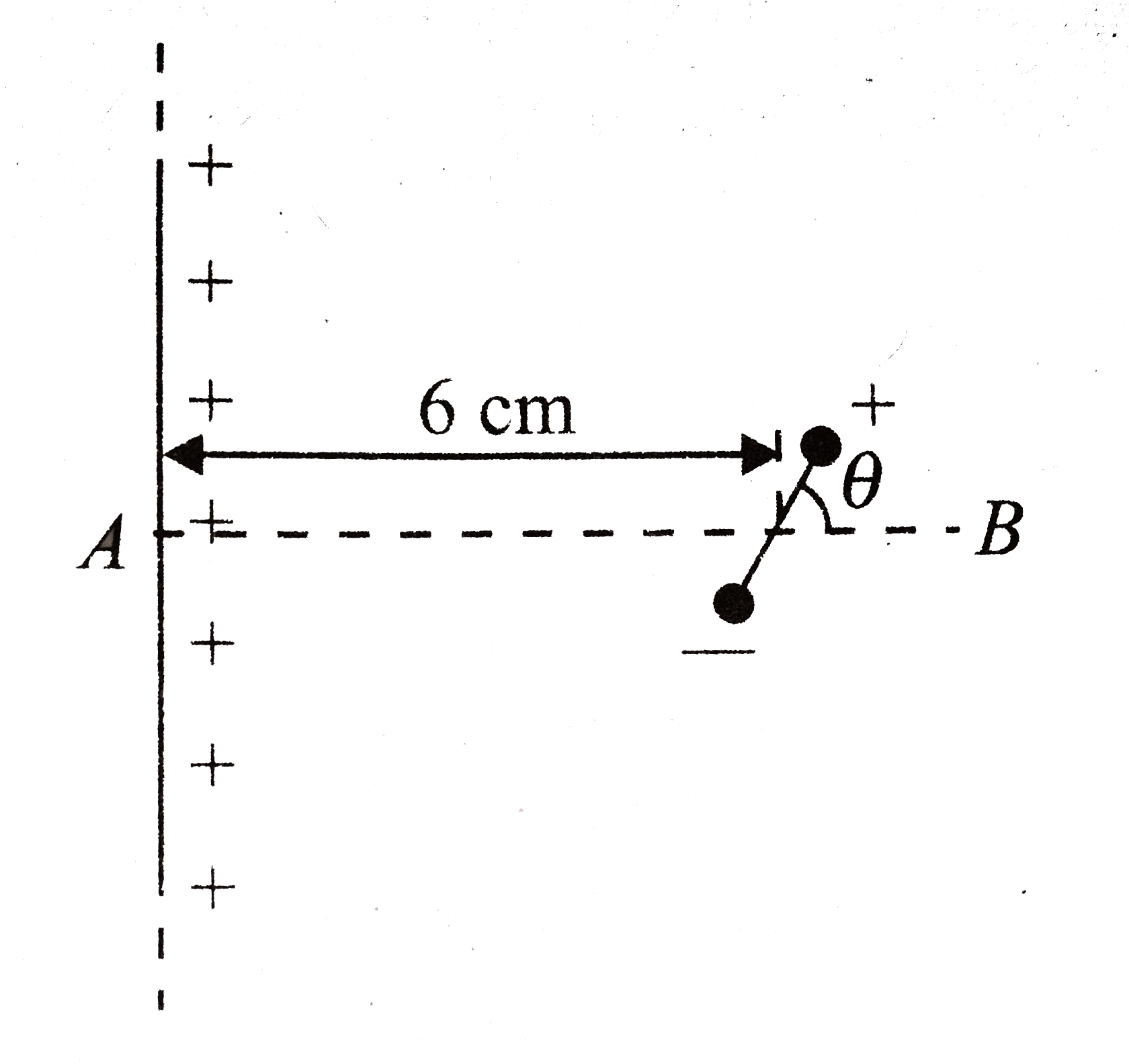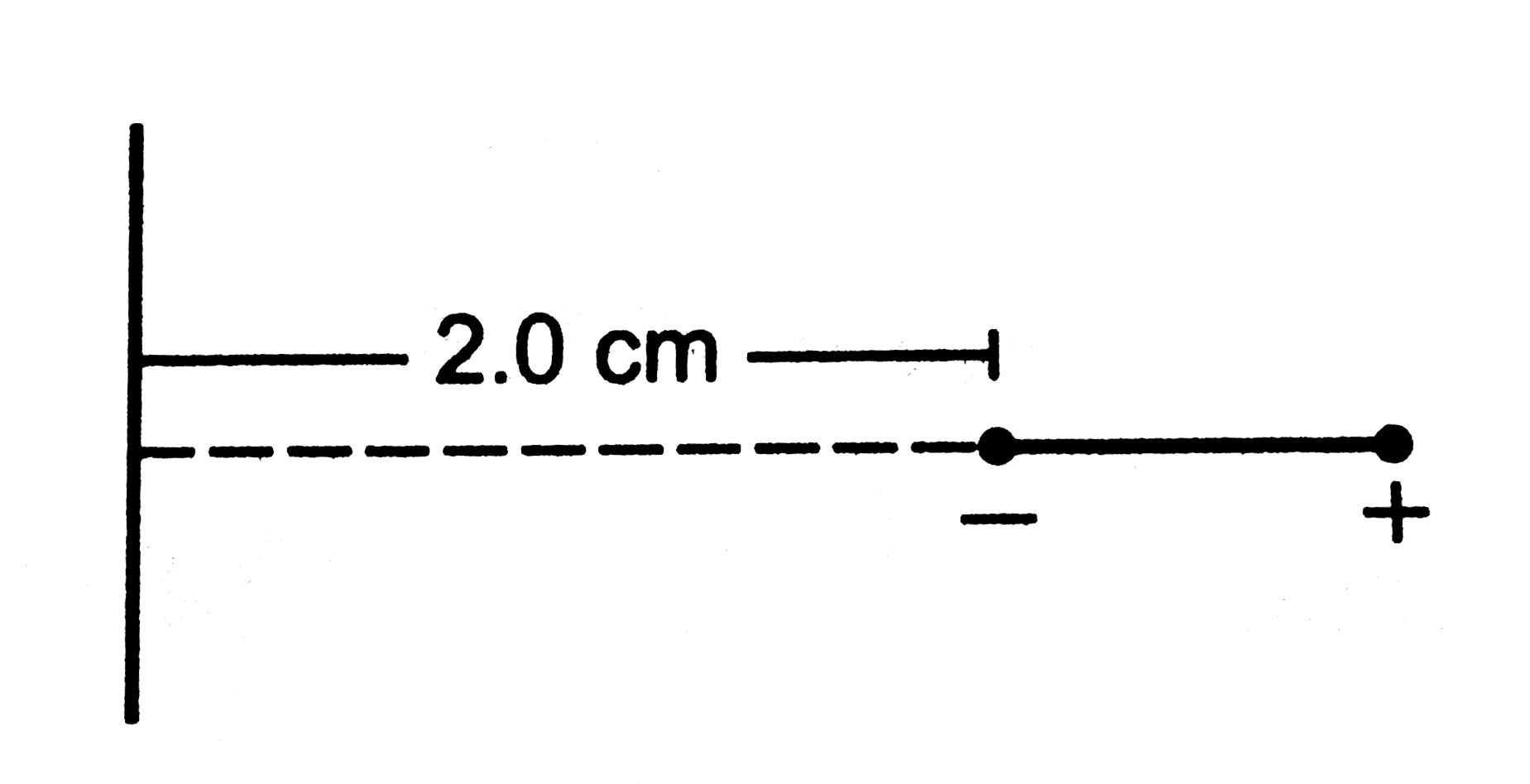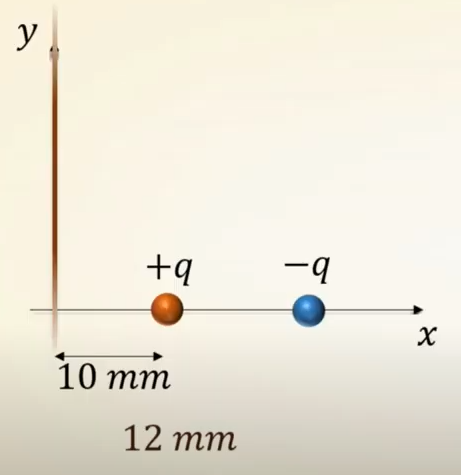An electric dipole consists of charges ±2.0×10−8 C separated by distance of ±2.0×10−3m. It is placed at a distance of 6 cm from a line charge of linear charge density 4.0×10−4Cm−1 as shown in figure such that the dipole makes an angle of θ=60∘ with line AB. Find the force acting on the dipole.

0.012N
1.8N
0.04N
none of these
The correct Answer is:C
P=2×10−4×2×10−3=4×10−11Cm
E=λ2πε0x,F=pcosθ(dEdx)
F=−pcosθλ2πε0x2=−4×10−11×cos60∘×4×10−412×9×109×(6100)2
=0.04N
Topper's Solved these Questions
- BOOK - CENGAGE PHYSICSCHAPTER - MISCELLANEOUS VOLUME 3EXERCISE - Multiple Correct Answer type109videos
MISCELLANEOUS VOLUME 3
- BOOK - CENGAGE PHYSICSCHAPTER - MISCELLANEOUS VOLUME 3EXERCISE - Assertion and Reason Type8videos
MISCELLANEOUS VOLUME 3
- BOOK - CENGAGE PHYSICSCHAPTER - MECHANICAL PROPERTIES OF SOLIDSEXERCISE - Question Bank4videos
MECHANICAL PROPERTIES OF SOLIDS
- BOOK - CENGAGE PHYSICSCHAPTER - MISCELLANEOUS VOLUME 5EXERCISE - Integer12videos
MISCELLANEOUS VOLUME 5
Similar Questions
An electric dipole consists of charges ±2.0×108C separated by a distance of 2.0×10−3 m. It is placed near a long ilne charge of linear charge density 4.0×10−4Cm−1 as shown in figure (30-W4), Such thet the negative charge is at a distance of 2.0 cm from the line charge. Find the force acting on the dipole.
 View Solution
View SolutionFind the magnitude of the electric field at a point 4 cm away from a line charge of density 2×10−6Cm−1.
View Solution
Knowledge Check
- Question 1 - Select One
An infinite line charge produces a field of 4.5×104N/C at a distance 2 m from it. The linear charge density is
A5μC/mB6μC/mC4μC/mD7μC/m - Question 2 - Select One
An electric dipole consisting of two opposite charges of 2×10−6C each separated by a distance of 3cm is placed in an electric field of 2×105N/C. The maximum torque on the dipole will be
A12×10−1NmB12×10−3NmC24×10−1NmD24×10−3Nm
An infinite line charge produces a field of 18×104 N/C at a distance of 2 metre from it. The linear charge density is
View SolutionA line charge having a linear charge density of 3×10−6Cm is placed as shown in figure. A dipole is placed on x-axis as shown. Find the charge q if it is subjected to a force of 4N.
 View Solution
View SolutionAn infinite line charge produces a field of 9×10−4N C−1 at a distance of 2 cm. calculate the linear charge density.
View SolutionAn infinite line charges produces a field of 9×104N/C at a distance of 2cm . Calculate the linear charge density.
View SolutionAn infinite line charge produces a field of 9×104NC−1 at a distance of 4cm. Calculate the linear charge density.
View SolutionAn infinite line charge produces a field of 9×104NC at a distance of 2cm. Calculate the linear charge density.
View Solution

